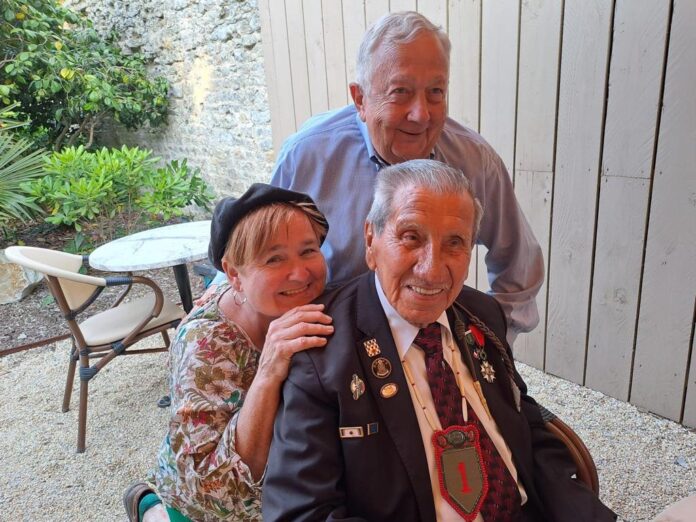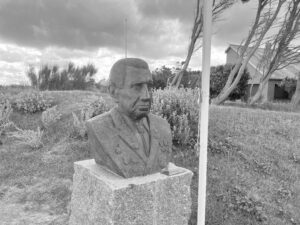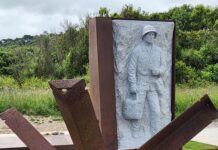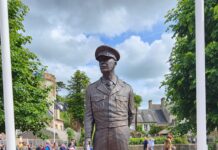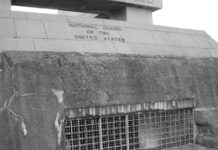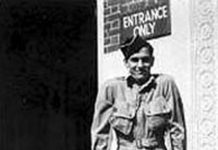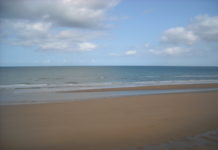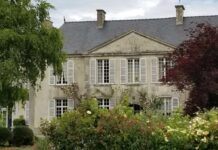Charles Norman Shay: Hero of D-Day
Unlike many divisions landing on D-Day on June 6, 1944, the U.S. First Infantry Division, nicknamed The Big Red One, was a battle-tested formation that had seen action in North Africa and Sicily.
The Big Red One landed in North Africa in November 1942 as part of Operation Torch. In July 1943, it spearheaded the invasion of Sicily, codenamed Operation Husky, where it faced tough German and Italian resistance.
During D-Day, the division landed in the first waves at Omaha Beach, suffering heavy casualties. It secured the beachhead and then advanced inland. It fought across France, Belgium and Germany, seeing heavy fighting in the Huertgen Forest and the Battle of the Bulge.
After the German surrender in May 1945, the division remained in Germany as part of the occupation forces. The elite division earned 17 Medals of Honor, nine posthumously, during World War II.
Charles Norman Shay, born June 27, 1924, was a member of the famous First Infantry Division, in the Medical Detachment. He was attached as a platoon medic to F Company, 2nd Battalion, 16th Infantry Regiment, when he landed in the first wave at Omaha Beach.
In an interview with Mike Van Buren for the Library of Congress, Shay, a Native American and member of the Penobscot tribe, grew up in Indian Island, Maine. After he entered the U.S. Army, he was sent to Camp Pickett, Virginia, for basic training, and then to Fort Benjamin Harrison, Indiana, for follow-on medical instruction. He was sent to England, onboard the Queen Elizabeth (which was turned into a troop ship), to join the First Infantry Division.
On June 6, 1944, he assisted his wounded comrades on Omaha Beach with bandages, splits and administered morphine. He saved the lives of several soldiers, trapped in the rising tide, from drowning. For this and other acts of heroism, he was awarded the Silver Star.
Sadly, one soldier he could not save was his friend, Pvt. Edward Morozewicz, who died on the beach. In an Associated Press story from 2024, Shay said he tried to comfort his friend, but knew he was dying from a stomach wound he could not treat.
Shay fought through the Normandy Campaign, during the battles at Aachen, the Huertgen Forest and Battle of the Bulge. He told Van Buren that he did not try to be close to anyone in his unit as they were often killed. He did look up to a fellow Penobscot tribal member, Melvin Neptune, who had served in many of the division’s battles.
In March 1945, Shay was part of a patrol near Auel, Germany, that was surrounded by 20 German soldiers—and were forced to surrender. He marched miles by night to Stalag VI-G. Ultimately, he was liberated on April 12, 1945, by American troops.
According to the Van Buren interview, Shay’s family never knew he had been captured, as he was listed as missing in action. They only knew of his fate when he showed up at the family’s house in Boston after the war.
After the war, he had a few jobs, but missed the military and chose to reenlist in the Army, serving in combat again in Korea with the 3rd Infantry Division. He served as a combat medic in the 3rd Division’s 7th Infantry Regiment.
After the Korean War, he reenlisted in the U.S. Air Force, retiring in the 1960s, and working in Austria with the International Atomic Energy Agency. He married and had a son.
A few years ago, he was awarded the Legion d’Honneur by the French government. In addition, in 2017, the Charles Shay Monument was unveiled on a dune near Omaha Beach. The monument, which features Shay’s bust and a sculpture of a turtle that is sacred to the Penobscot tribe, commemorates all Native Americans who landed on D-Day.
For this article, Margaret Heeson, interviewed Shay in late 2023. He now lives in Normandy, France.
Interviewer: What was your motivation for joining the military?
Shay: “I had no choice. I was drafted.”
Interviewer: What was your experience during training?
Shay: “The military training was something I never experienced before, it was all new for me. I was sent to Fort Devens, Massachusetts. Once I was processed, I was sent to Camp Pickett, Viriginia, in the summer of 1943 for my basic training. There I received my basic military introduction to the military service and trained for how to march, how to dress, how to conduct yourself and learn about your life in the military service.”
Interviewer: What follow-on training occurred?
Shay: “I was selected and was sent for further medical training at Fort Benjamin Harrison, northeast of Indianapolis, Indiana, where I stayed for about 8 weeks of intense training. I did not choose to become a medic—the Army needed more medics so they put you in there.
“I was trained in further medical tasks, got some knowledge about anatomy and became a circulating nurse in the operating room of a field hospital. I was trained to prepare the operating room and surgical equipment, cleaning and sterilizing equipment, assisting patients from and to the operating room.”
Interviewer: What other duties did you have?
Shay: “I performed work of a scrub nurse and circulating nurse assisting in operations, hold patients on the operating table for injections before they were operated on and I was also responsible that no item such as bandages has not been left in the body of the patient by counting them and make sure all items have been eliminated before closing the wound. I was trained to become a surgical technician. Once this training has been completed by early fall, I thought I had a good position and will work in a field hospital. Unfortunately, it never happened.”
Interviewer: What was the most difficult thing you experienced during your time in combat?
Shay: “The invasion of Normandy, which was a quite large operation to defeat the enemy on the beach, probably equal to what we experienced later on in the Huertgen Forest, but it was a smaller operation.
Interviewer: What are your feelings about being a Native American during World War II?
Shay: “Nothing. I never felt different from my comrades.”
Interviewer: How was your POW experience?
Shay: “I was treated like other prisoners. We were in the thousands at the Stalag.”
Interviewer: What was the most rewarding thing you experienced during your time in combat?
Shay: “Defeat the enemy on D-Day.”
Interviewer: How did military service in World War II change you?
Shay: “It made me aware we have to be prepared to defend our country against the enemy who wants to change our way of life.”
Interviewer: How should the war be viewed by today’s younger generations?
Shay: “They should be prepared to defend their country if ever it becomes necessary again.”



